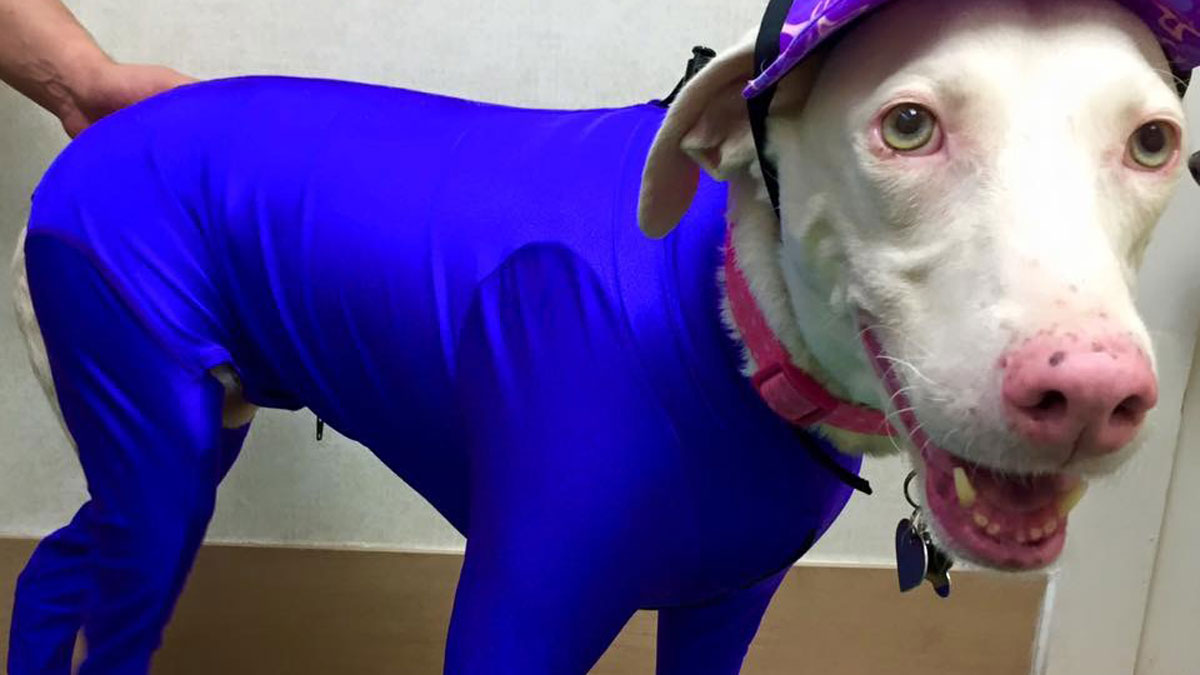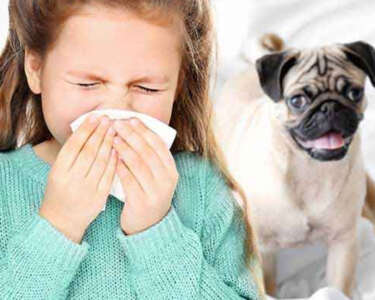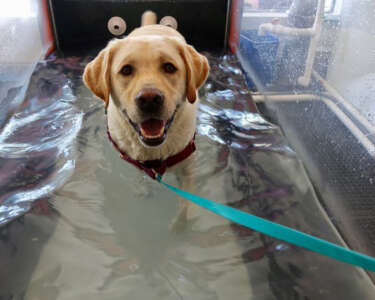The most dangerous month of the year for pets in South Florida is August. As temperatures and humidity rise, our pets are especially prone to life-threatening heat-induced conditions. Veterinary emergency clinics are busier this time of year attending patients with conditions caused by the hot summer sun — and that are preventable. Here is a quick list of the most common summer dangers for pets and easy tips to prevent them and provide first aid.
Heatstroke
A heatstroke develops when the core body temperature rises and stays above a certain temperature. In dogs and cats, this threshold temperature is 106 degrees Fahrenheit, at which point they can start convulsing (their normal core temperature is 100 to 102.5 degrees Fahrenheit). Dogs and cats are more prone to heatstroke than humans, since they lack sweat glands over most of their body surface, affecting their ability to sweat and cool their bodies. Pets with flat noses such as bulldogs, pugs and Persian cats are more prone to heatstroke, even in slightly warm temperatures, since their nasal structures are not efficient enough for cooling the body effectively. Black-colored animals absorb and maintain the heat in their bodies more readily, making them more susceptible to a heatstroke. Small pets such as rabbits and ferrets typically live in cooler temperatures and have more difficulty handling the summer heat of South Florida.
Luckily, heatstroke can be prevented following simple steps: Check the weather report daily so you can plan how to keep your pet safe while you are at work. Never leave your pets outside unsupervised, even if shade and cool water are provided. Many of the emergencies veterinarians see are from pets left outside unsupervised during the day. Never leave a pet in an enclosed balcony that receives direct sunlight during the day, leaving no place for the pet to escape the heat. Lastly, never leave a pet in a parked car, even if the car is in the shade with the windows open. Leaving a pet in a parked car can develop into a life-threatening condition in as fast as 5 to 10 minutes. In Florida, this is such a common occurrence that the law allows individuals to break into a stranger’s car if an animal is in obvious respiratory distress inside the locked car, the owner is not close by, and a 911 call has already been placed.
If you find your pet walking drunk-like, slow and confused, with extremely red gums and excessive panting, he or she might be suffering from heatstroke. Rapidly transfer the pet to a cooler ventilated area; apply wet towels (not ice) to the neck, inguinal and axillary areas (where the blood vessels are closer to the skin); and call the closest emergency veterinary clinic to notify them that an animal with heatstroke is on the way.
Solar Dermatitis and Skin Burns
Just like we can get dangerous sunburns, our pets are prone to solar dermatitis and burns if exposed too long to the sun’s powerful rays. White-coated animals will suffer the worst burns, since they lack enough skin pigment to protect their skin. Likewise, animals with short fur have less protection of the skin, especially on hairless areas such as the nose, ear flaps and belly. The most dangerous consequence of sunburns is skin cancer, such as squamous cell carcinoma. This is a highly aggressive skin cancer that is too common in pets and is totally preventable. Treatment requires surgery and, in many cases, further therapies such as radiation or chemotherapy.
To prevent sunburns, keep your pet inside or in complete shade when the sun rays are strongest, from 10 a.m. to 3 p.m. For those light-coated pets that enjoy lying in the sun for a few minutes daily, there are now elegant sunproof hats and apparel for pets that are stretchy and comfortable to wear. Apply sunscreen for babies (SPF 15 or above) on the hairless areas, mainly on top of the nose and ear flaps. Avoid any sunscreen that contains zinc, since it can be toxic if your pet licks it off.
Trauma to Toe Pads
Perhaps the most common heat-related problem that veterinarians see during the hot season is burning of the paws. Going for walks on hot pavement, pavers, sand or other ground material that stores heat will cause burning, bleeding and sloughing off of the foot pads. This is an extremely painful condition, and many times the main symptom that is seen is limping and/or licking of the paws. It is a treatable condition, though it takes several weeks to heal completely. To keep your dog’s paws safe, go for walks on cool grounds such as grass. Avoid walks during the hottest part of the day and consider using dog shoes or boots to protect the paws. Special care should be taken in choosing the proper fit to avoid turning and twisting of the shoe. Look for light and comfortable materials so your dog will be more likely to accept the shoes.
Summertime is an enjoyable season of boat rides, beaches and outdoor fun in South Florida for all, including our pets. Proper care should be taken to avoid an emergency that potentially could be fatal. Have fun with your pets and keep them safe!













 Deering Estate
Deering Estate
 Massage Envy South Miami
Massage Envy South Miami
 Calla Blow Dry
Calla Blow Dry
 My Derma Clinic
My Derma Clinic
 Sushi Maki
Sushi Maki
 Sports Grill
Sports Grill
 The Healthy Kitchen
The Healthy Kitchen
 Golden Rule Seafood
Golden Rule Seafood
 Malanga Cuban Café
Malanga Cuban Café

 Kathleen Ballard
Kathleen Ballard
 Panter, Panter & Sampedro
Panter, Panter & Sampedro
 Vintage Liquors
Vintage Liquors
 The Dog from Ipanema
The Dog from Ipanema
 Rubinstein Family Chiropractic
Rubinstein Family Chiropractic
 Your Pet’s Best
Your Pet’s Best
 Indigo Republic
Indigo Republic




 ATR Luxury Homes
ATR Luxury Homes


 2112 Design Studio
2112 Design Studio
 Hamilton Fox & Company
Hamilton Fox & Company
 Creative Design Services
Creative Design Services
 Best Pest Professionals
Best Pest Professionals
 HD Tree Services
HD Tree Services
 Trinity Air Conditioning Company
Trinity Air Conditioning Company
 Cisca Construction & Development
Cisca Construction & Development
 Mosquito Joe
Mosquito Joe
 Cutler Bay Solar Solutions
Cutler Bay Solar Solutions


 Miami Royal Ballet & Dance
Miami Royal Ballet & Dance
 Christopher Columbus
Christopher Columbus
 Pineview Preschools
Pineview Preschools
 Westminster
Westminster
 Carrollton
Carrollton
 Lil’ Jungle
Lil’ Jungle
 Frost Science Museum
Frost Science Museum
 Palmer Trinity School
Palmer Trinity School
 South Florida Music
South Florida Music
 Pinecrest Orthodontics
Pinecrest Orthodontics
 Dr. Bob Pediatric Dentist
Dr. Bob Pediatric Dentist
 d.pediatrics
d.pediatrics
 South Miami Women’s Health
South Miami Women’s Health

 The Spot Barbershop
The Spot Barbershop
 My Derma Clinic
My Derma Clinic




 Miami Dance Project
Miami Dance Project

 Rubinstein Family Chiropractic
Rubinstein Family Chiropractic
 Indigo Republic
Indigo Republic

 Safes Universe
Safes Universe
 Vintage Liquors
Vintage Liquors
 Evenings Delight
Evenings Delight





 Atchana’s Homegrown Thai
Atchana’s Homegrown Thai
 Baptist Health South Florida
Baptist Health South Florida

 Laser Eye Center of Miami
Laser Eye Center of Miami
 Visiting Angels
Visiting Angels
 OpusCare of South Florida
OpusCare of South Florida

 Your Pet’s Best
Your Pet’s Best





 HD Tree Services
HD Tree Services
 Hamilton Fox & Company
Hamilton Fox & Company


 Creative Design Services
Creative Design Services